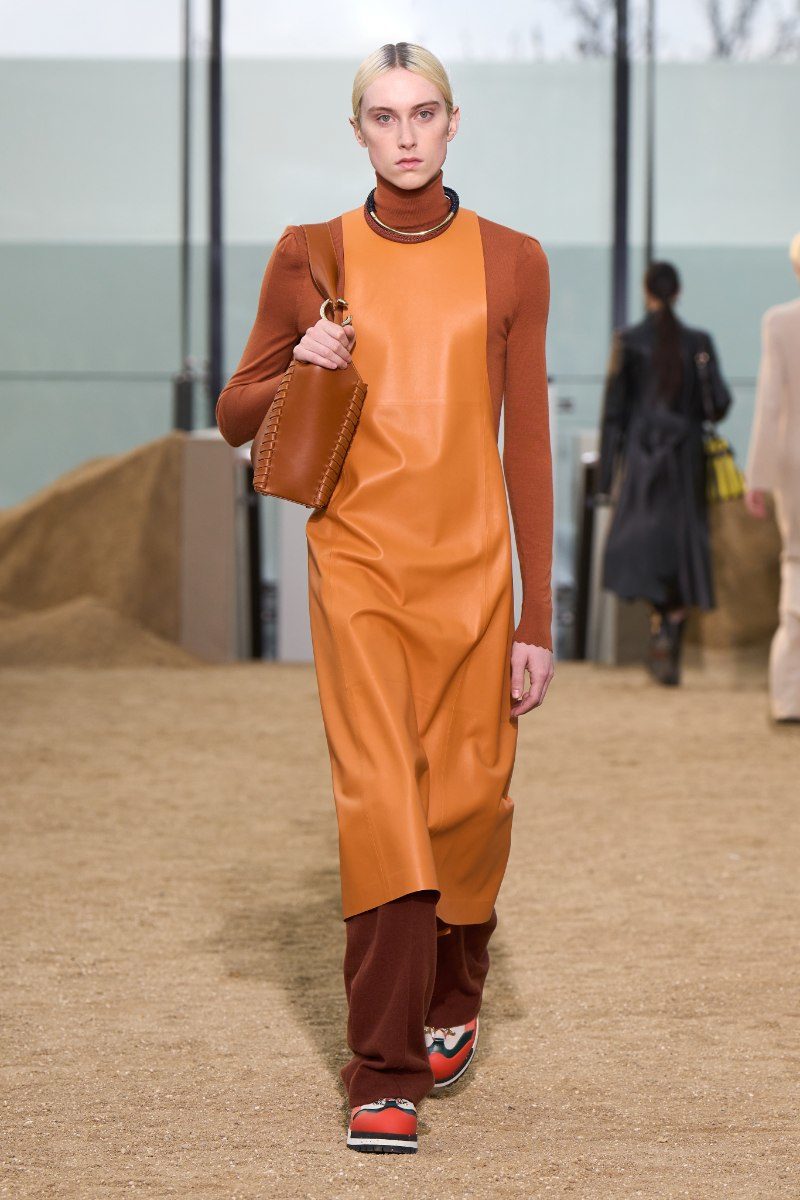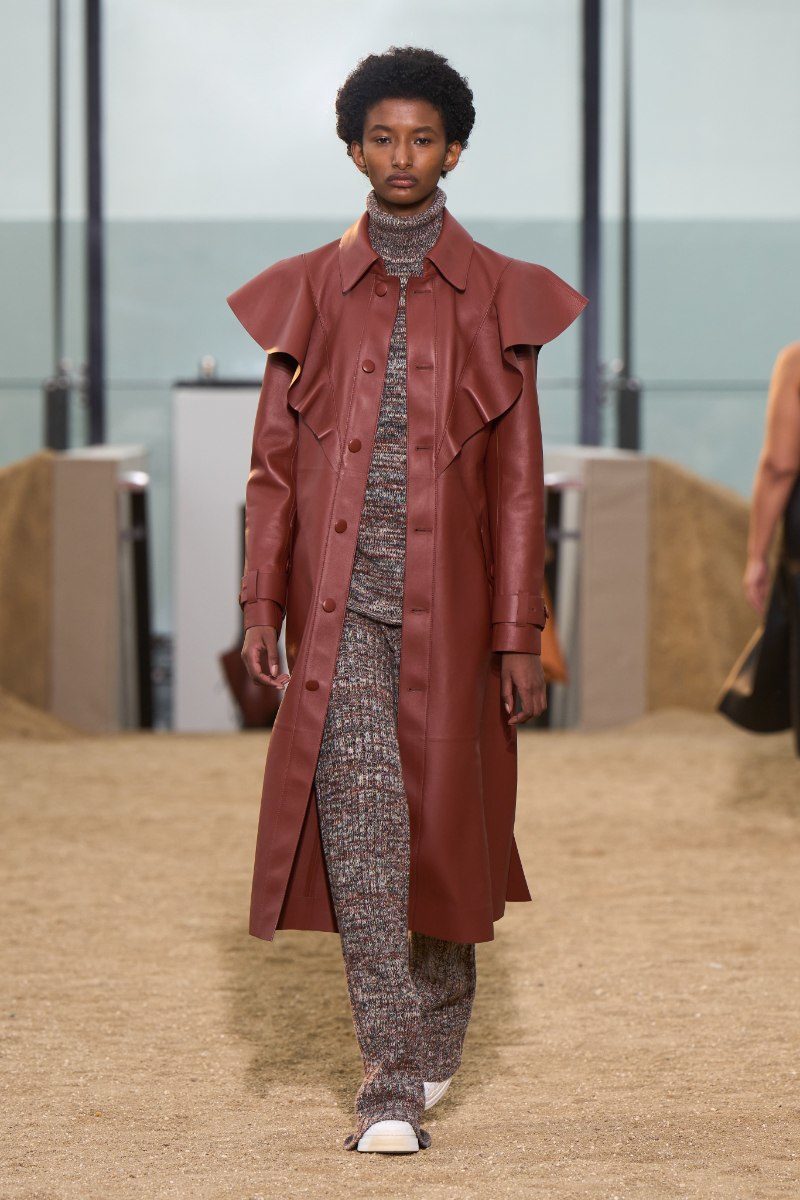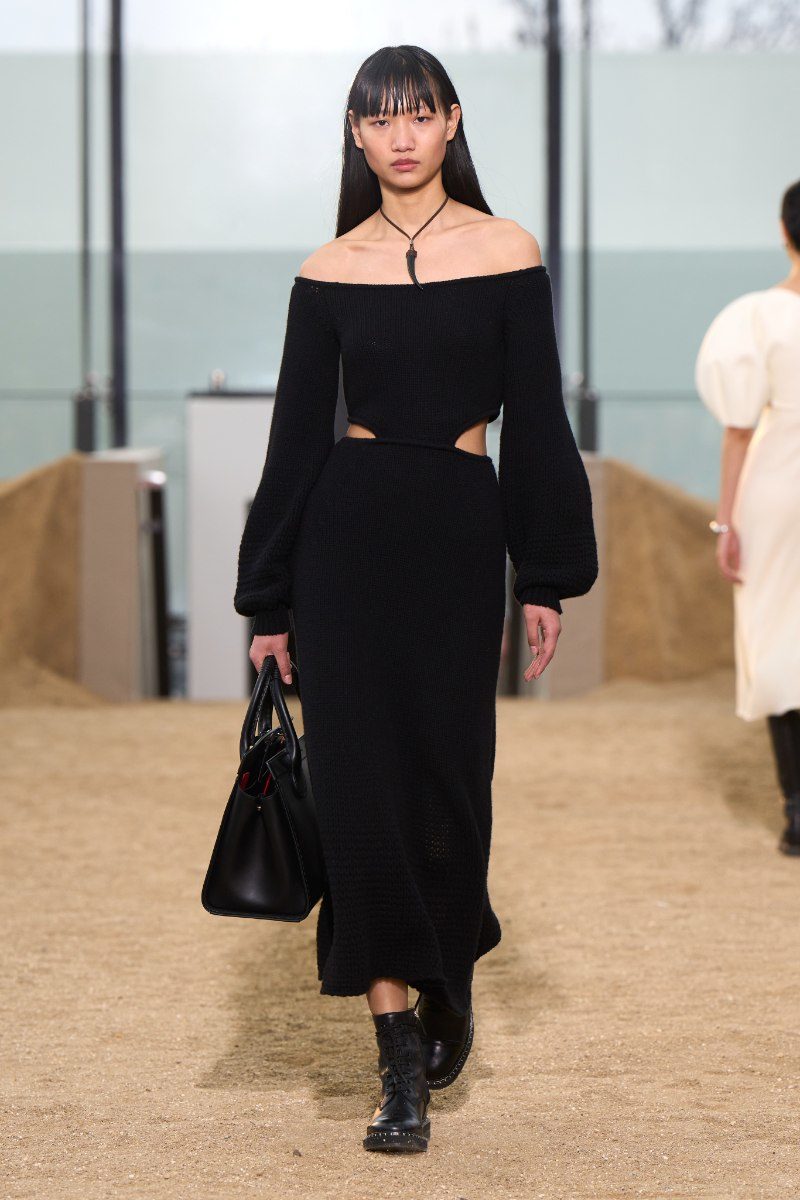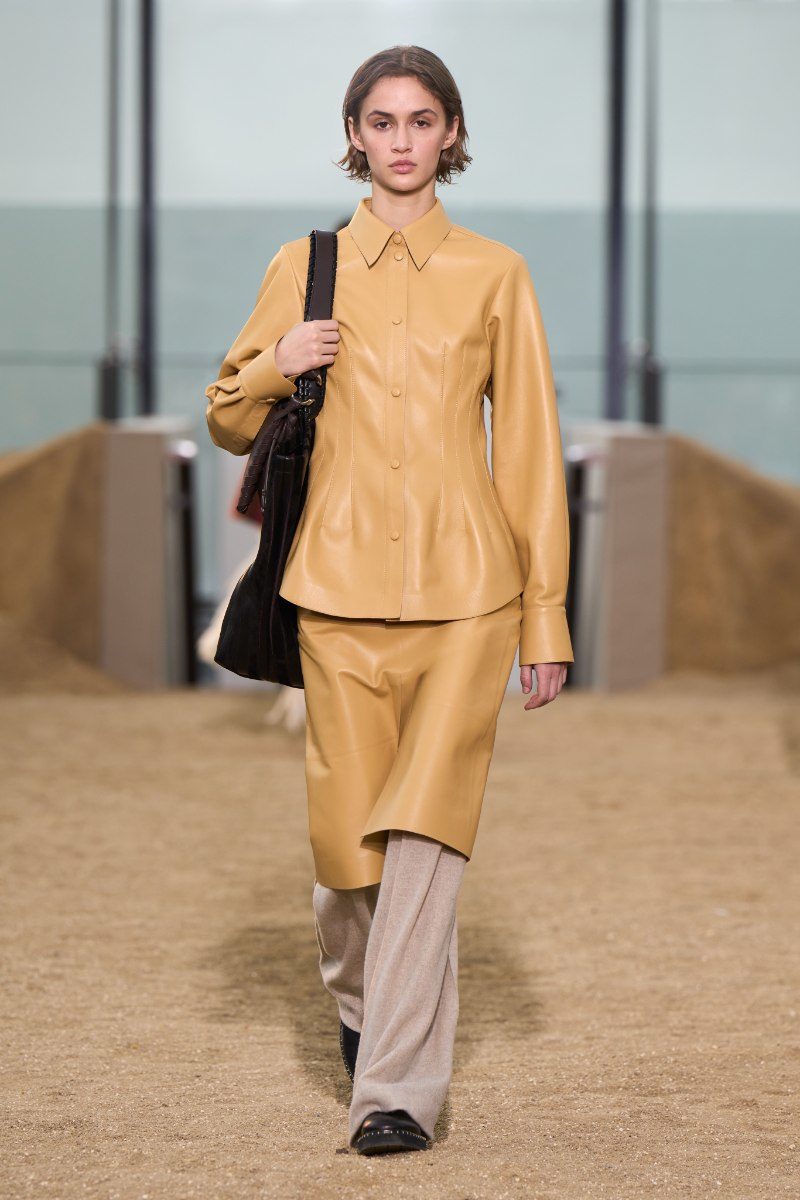“We think about the climate crisis, we’re able to see the climate crisis,” Gabriela Hearst declared. “But now it’s time to start visualising climate success. And there are many ways of doing it. Rewilding is one of them.”
More than any other high-fashion designer, except for Stella McCartney, Hearst invites discussion, inspection, even, of how she sources her materials—both for her own brand in New York, and here at Chloé in Paris. Which meant that a fundamental divergence between the positions of these two climate-activist fashion designers opened up at the beginning of the show. Here there was leather. A lot of it. Not “vegan leather” or any of its fruit or mushroom substitutes, or its fossil fuel-derived polyester lookalikes (as used, variously, by McCartney), but actual glossy leather-leather. Made from the hides of cattle.
“For me, leather is a by-product of the meat industry,” Hearst said in a preview. “So, as long as you know where it’s coming from, and you have traceability and it’s done in a proper way, you’re using waste.” Her leather comes from Italian suppliers, whose tanning processes are compliant with European environmental standards.
Over to how the overture to the collection looked: strict, minimal, black, brown and yellowy-tan leather pieces, ranging from coats to shirts to narrow jeans—with an of-the-moment white tank tee—and a belted black dress with balloon sleeves. The show hewed between boy-tailored pant suits, fit-and-flare dresses, and Hearst’s characteristic affinity for ponchos and knitwear—and for searching out links with socially-responsible textile projects.
The latest is her commissioning of the African-American Gee’s Bend women quilters of Alabama. The storied artist community used Chloé deadstock scraps to fashion blankets and the gilet layered over a coat worn as the finale by Amber Valletta.
Back to Hearst’s primary resolve to message hopeful solutions in the face of climate anxiety. She’d sought out the advice of Isabella Tree, the British environmentalist who returned her farmland in Sussex to nature. Leaving it to its own devices—“Rewilding”—has scientifically proved how ecosystems, plants, insects, birds, and soil will start healing themselves of their own accord, in balance with the benefits brought by grazing animals. Hearst relates to that, through her own experience of being brought up on her mother’s ranch in Uruguay. “My mom’s place is full of wildlife, because she never overgrazes, so it’s regenerative,” she said. “When people talk about regenerative agriculture, I know it firsthand.”
On the runway, Hearst wanted to materialise the hope that damage can be reversed. She did it with recycled cashmere knitted sweaters and skirts. On the front were instarsia images of melted glaciers, arid and burning landscapes. On the reverse: pictures of green mountain ranges, forests and polar bears. If only humans can imagine that, she believes, we can make it happen.

1 / 12

2 / 12

3 / 12

4 / 12

5 / 12

6 / 12

7 / 12

8 / 12

9 / 12

10 / 12

11 / 12






